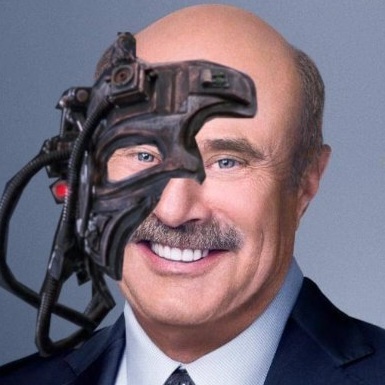cross-posted from: https://sh.itjust.works/post/16676119
I am seriously considering pulling the trigger on a switch to Linux. Looking for advice and discussion
In terms of hardware, what are some good cost effective resources and what what things might I want to consider differently than what I am used to in both the Mac and Windows worlds? I need smart home management, a plex hub, and photo editing, as well as the usual other stuff.
EDIT: When I say photo editing, I am talking about working with RAW files to optimize the image according to my taste and style. I also make use of software that has good library organization capabilites. In this case, I use CaptureOne. I do not generally do the sort of editing people do in photoshop, putting unicorns in their pictures or whatever people do these days. I’m not opposed to cool creative images or anything, I just don’t go down that route terribly often.
My best advice is:
Don’t listen too much about what strangers on the Internet say you should do or use.
Non of us has statistics to pull from. Mostly it’s individual experience mixed with personal preferences. All that could be different for someone else. E.g. some people will have problems with Nvidia, other with AMD.
Stick to the basic and add fancy stuff later on.
Don’t pick a distribution because of the Desktop environment. Or because someone said it has a nifty feature. People create new distros all the time just for fun and not because there would be a real reason for it. Looking on the release cycle would probably be the most basic decision you should take. Read about the differences between “rolling release” and “long time support” and decide base on you personal use case.
Have a backup strategy
This is nothing limited to Linux but since you are planing to switch your habits, there is a high possibility you will mess up at some point. Best would be you try to stimulate the worst case and look if you would be able to setup your system in a VM or something.
Don’t be afraid to try things out
Especially when you know that your backup is working. There is not much you can lose. Don’t be afraid of using Arch Linux e.g. just because someone on the Internet said it’s just for pros or something.
So this last one is maybe just the consequences of all the above. But yeah I guess that’s all I could say for now 😅
There’s no doubt NVIDIA works worse than AMD. That’s just a well known fact.
I have extra old computers I can use for the hardware. Older than 4 years though. I probably would not install on my main machine yet until I know what I am doing. I did use Ubuntu like 10 years ago, and very much enjoyed it, but I’m assuming quite a bit is different and better now.
I’m a noob and dived right into Arch after light mint use on a spare laptop. Still waiting for the mythical update bork or system break.
Love this. It’s related to one of the reasons I have recommended NixOS more often than I would have expected (not, however, as often as Fedora, Mint, etc.): if you’re heading into a new way of using a computer anyway, why not go with something that forces you to abandon assumptions and learn something truly new? With the side benefit of effortless rollbacks if something you fiddle with goes horribly wrong. :)
But, no, at risk of violating rule #1 in your post, just pick a distro, don’t worry too much about which, pick a desktop environment, don’t worry about which, use the machine, and if you have a negative experience only then remember that you can try another desktop environment, distro, etc. Eventually you’ll get to a distrohopping phase, but until then it’s just software and a computer is just a tool.
I don’t think you should proactively “switch to Linux”. Instead you should “play with Linux”, ideally duel boot and a day will come when you can’t remember the last time you used Windows.
duel boot
⚔️
It’s time to d-d-d-duel boot
Trial by combat. May the last OS standing win. :p
So we’re doing uptime now? I’m afraid Arch will never make it with all that update.
It’s all well and good until windows overwrites the bootloader
Well, moving to linux suggests you‘re trying to use it on your desktop, yet the post body suggests you‘re looking for a server.
These are two very distinct projects with vastly different difficulty and complexity levels.
I first made a homeserver for automation (homeassistant), streaming (plex), cloud (nextcloud) and some others. This was fairly straightforward and helped me learn the intricacies of the commandline from the ground up. I have no desktop environment on said server so I was forced to learn to ssh into it and my understanding grew quite fast.
After 2 yrs of this server running more or less without hickups (some minor mistakes made by me), I switched my desktop and lo and behold, it was quite a mess. Desktop linux is infinitely more complex than server linux and the amount of things that can (and probably will) go wrong multiply.
Hardwarewise, you can use the shittiest machine you can find for linux since windows is much more demanding. I even put lubuntu (bc lxqt) on a laptop from 2008 and its glorious! To get streaming in hd pr 4k you‘ll need a fairly strong machine with at least 4 cores and maybe 8-16 gbs of ram.
For the desktop, you‘d ideally go full amd to not have to deal with the mess that is nvidias closed source trashcan drivers. Your games will be all over the place if you play, either they run better, the same or worse than on windows, very few dont work at all, quite a few require tinkering.
But all in all, if you are willing to learn, you‘ll find a distro for yourself. I recently put pop os on a fairly new gaming laptop and it works very well. Mint is the more non gaming variant imo, ubuntu is great for switchers but quite controversial, for more control but also quite a lot more tinkering, you can go debian, arch or gentoo. The last two I consider absolute tinkerers distros. There are hundreds more but thats for later.
Good luck and feel free to update on your progress or ask follow up questions.
For your photo needs, you could try out RawTherapee and Darktable. They have builds for Windows and MacOS.
Darktable has an astonishingly odd UI. It’s a very, very powerful piece of software, but the workflow and assumptions are unlike any other software tool I’ve used. That’s not necessarily a bad thing, but if you’re looking to make a few luminosity adjustments as in Lightroom, it’s going to feel alien. RawTherapee isn’t, I suppose, as powerful at the top end, but it’s much more accessible initially.
You might also want to look at Rapid Photo Downloader for easy and consistent photo importing to the filesystem.
Thanks!
Linux supports a lot of hardware, the problem rise mostly on wireless cards. Thinkpads should be the most supported, other than linux first laptops. If you are building one, take a look at https://linux-hardware.org (where people uploads probes of their hardware). If you want to save you a headache, avoid nvidia. I never used it, but I’ve read a lot of issues related to it. Maybe someone else here can say more about it.
For distro choosing, nowaday almost all the biggest distros should be able to do anything. So the choose is about desktop environments (DE). Are you coming from Windows or from Mac?
If you are coming from Windows, then I would recommend Linux Mint with Cinnamon DE, because:
- It is based on Debian (so it gets a lot of support)
- Windows like GUI
- Good default settings
- Flatpak preinstalled
- Good customization
If you are coming from Mac, then I would recommend Fedora Linux with Gnome DE, because:
- MacOS like GUI
- Good default settings
- Flatpak preinstalled
- Good customization (thru extensions)
But on Fedora you should install mesa and codecs from rpmfusion.
Remember: always prefer the software store to install apps.
install mesa and codecs from rpmfusion
op most likely doesn’t know what that means
A quick lookup on ddg should be enough.
But yes, it is indeed more advanced stuff.
Intel or AMD CPU, AMD GPU, any RAM, SSD/NVME, PSU, etc.
For photo editing, if you use Photoshop, you should know it doesn’t work on Linux. Your choices are:
- Adobe Creative Cloud Photoshop
- Photopea
- GIMP
- Krita (not the same but it might be of use depending on your use case)
Linux runs great on most hardware. What you described will function fine with a 4-year old laptop or desktop with integrated graphics as long as you have a decent processor (i5/i7 or ryzen 7) and enough RAM (16BG) and an ssd. Two ssds, one for OS and the other for storage is also a good idea.
I suggest ubuntu.
Side note: for photo editing, GIMP or Krita are the go-to apps but neither offer good CMYK color space of you’re printing stuff.
Good luck! Don’t get discouraged learning new things.








